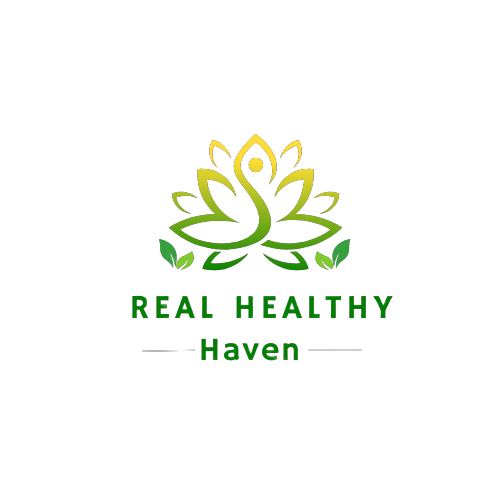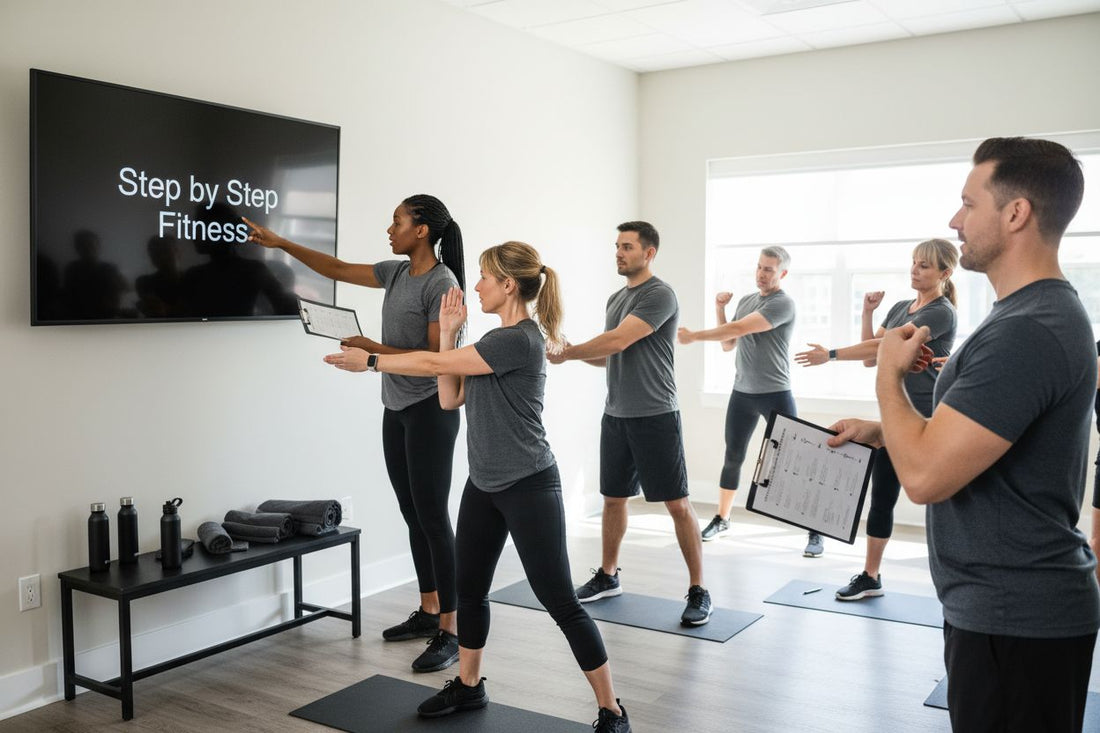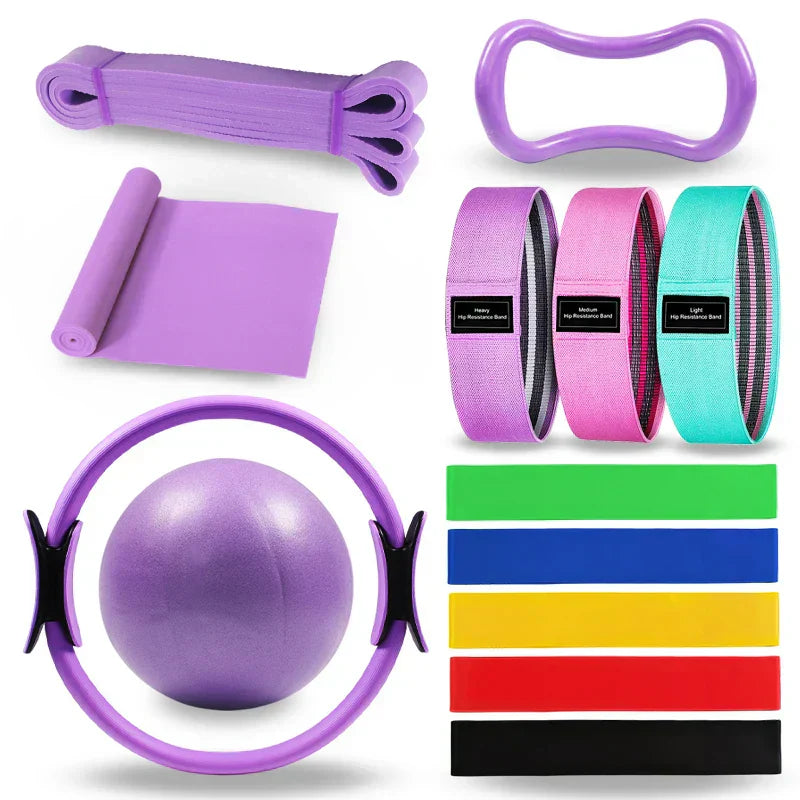Starting out with fitness advice feels overwhelming at first and you might wonder where to even begin. Most people think sticking to a workout will be impossible without fancy gyms or extreme routines. Yet the truth is that even small steps, like adults reaching just 150 minutes of moderate activity per week, can lead to real results and lasting change. Discover how step by step fitness routines for beginners can actually fit your life and make progress possible from day one.
Table of Contents
- Step 1: Assess Your Current Health Status
- Step 2: Set Clear Fitness Goals For Yourself
- Step 3: Choose Suitable Exercises For Beginners
- Step 4: Create A Weekly Fitness Schedule
- Step 5: Track Your Progress Regularly
- Step 6: Adjust And Enhance Your Routine As Needed
Quick Summary
| Key Point | Explanation |
|---|---|
| 1. Assess Your Health Status | Begin with a thorough health evaluation to tailor your fitness journey and ensure safety. |
| 2. Set Specific Fitness Goals | Create clear, measurable, and realistic goals to motivate and guide your progress. |
| 3. Choose Beginner-Friendly Exercises | Start with low-impact exercises to build confidence and prevent injury while improving fitness. |
| 4. Create a Consistent Schedule | Develop a balanced weekly fitness plan that includes varied activities and adequate recovery. |
| 5. Track Progress and Adjust | Regularly monitor your progress and adapt your routine as needed for continued improvement and motivation. |
Step 1: Assess Your Current Health Status
Before beginning any fitness journey, understanding your current physical condition is crucial. This foundational step helps you create a personalized and safe approach to step by step fitness for beginners. Your health assessment will serve as a roadmap, identifying potential limitations and opportunities for improvement.
Starting your fitness journey requires honest self-evaluation and professional guidance. Schedule a comprehensive medical consultation with your primary healthcare provider to conduct a thorough physical examination. During this visit, discuss your fitness goals and request specific health screenings that will provide critical insights into your overall wellness.
Centers for Disease Control and Prevention recommends adults obtain a medical clearance before initiating any new exercise program. Your physician can help you understand key health metrics such as:
- Blood pressure
- Cholesterol levels
- Resting heart rate
- Body mass index (BMI)
- Cardiovascular health
- Muscular strength and flexibility
Beyond medical metrics, perform a personal physical assessment. Evaluate your current fitness level by noting your comfort with basic movements like walking, climbing stairs, or carrying groceries. Pay attention to any physical discomfort, joint pain, or limitations that might impact your exercise routine. This self-awareness helps design a workout plan that progressively challenges you without risking injury.
Documenting your initial health status creates a baseline for tracking future progress. Consider creating a simple health journal where you record initial measurements, medical recommendations, and personal observations. This documentation will become an invaluable tool for monitoring your fitness transformation and maintaining motivation throughout your wellness journey.
Step 2: Set Clear Fitness Goals for Yourself
Transitioning from understanding your current health status to establishing meaningful fitness objectives requires thoughtful planning and self-reflection. Clear goals transform vague intentions into actionable strategies for your step by step fitness for beginners journey. This stage is about creating a roadmap that motivates and guides your wellness transformation.
Begin by exploring your personal motivations. Are you seeking improved cardiovascular health, increased strength, weight management, or enhanced overall mobility? Your goals should resonate deeply with your individual needs and lifestyle. Consider writing down your primary objectives, making them specific, measurable, and realistic. Instead of saying “I want to get fit,” craft a precise statement like “I aim to walk 10,000 steps daily and complete two strength training sessions per week.”
Canadian Society for Exercise Physiology recommends adults establish comprehensive fitness objectives that encompass multiple dimensions of physical wellness. Your goals might include building muscular strength, improving cardiovascular endurance, enhancing flexibility, and maintaining consistent physical activity.
Designing achievable objectives requires breaking down larger aspirations into smaller, manageable milestones. If your ultimate goal involves losing 30 pounds or running a 5K, create incremental targets that provide consistent motivation. For instance, start with losing 5 pounds or running one continuous mile, then gradually increase your challenges.
Utilize a tracking method to monitor your progress and maintain accountability. A simple fitness journal, smartphone application, or dedicated fitness planner can help you document your journey. Note your starting measurements, weekly achievements, and challenges encountered. This documentation not only tracks progress but also serves as a powerful motivational tool, allowing you to visually witness your improvements over time.
Remember that goal setting is a flexible process. Be prepared to adjust your objectives as you learn more about your body and capabilities. Fitness is a personal journey of continuous learning and adaptation, and your goals should evolve alongside your growing strength and confidence.
Step 3: Choose Suitable Exercises for Beginners
Selecting appropriate exercises is a critical component of your step by step fitness for beginners journey. The right workout routine will challenge you without overwhelming your body, creating a sustainable path to improved health and wellness. Your exercise selection should balance safety, enjoyment, and progressive difficulty.
Low impact activities form an excellent foundation for beginners, particularly for those over 40 or returning to fitness after a prolonged break. Walking, swimming, and stationary cycling provide cardiovascular benefits while minimizing joint stress. These activities allow you to build endurance gradually and develop confidence in your physical capabilities.
National Institute on Aging emphasizes the importance of incorporating four primary exercise types into your fitness routine: endurance, strength, balance, and flexibility training. This comprehensive approach ensures holistic physical development and reduces injury risks.
Strength training becomes increasingly important as we age, helping maintain muscle mass and bone density.
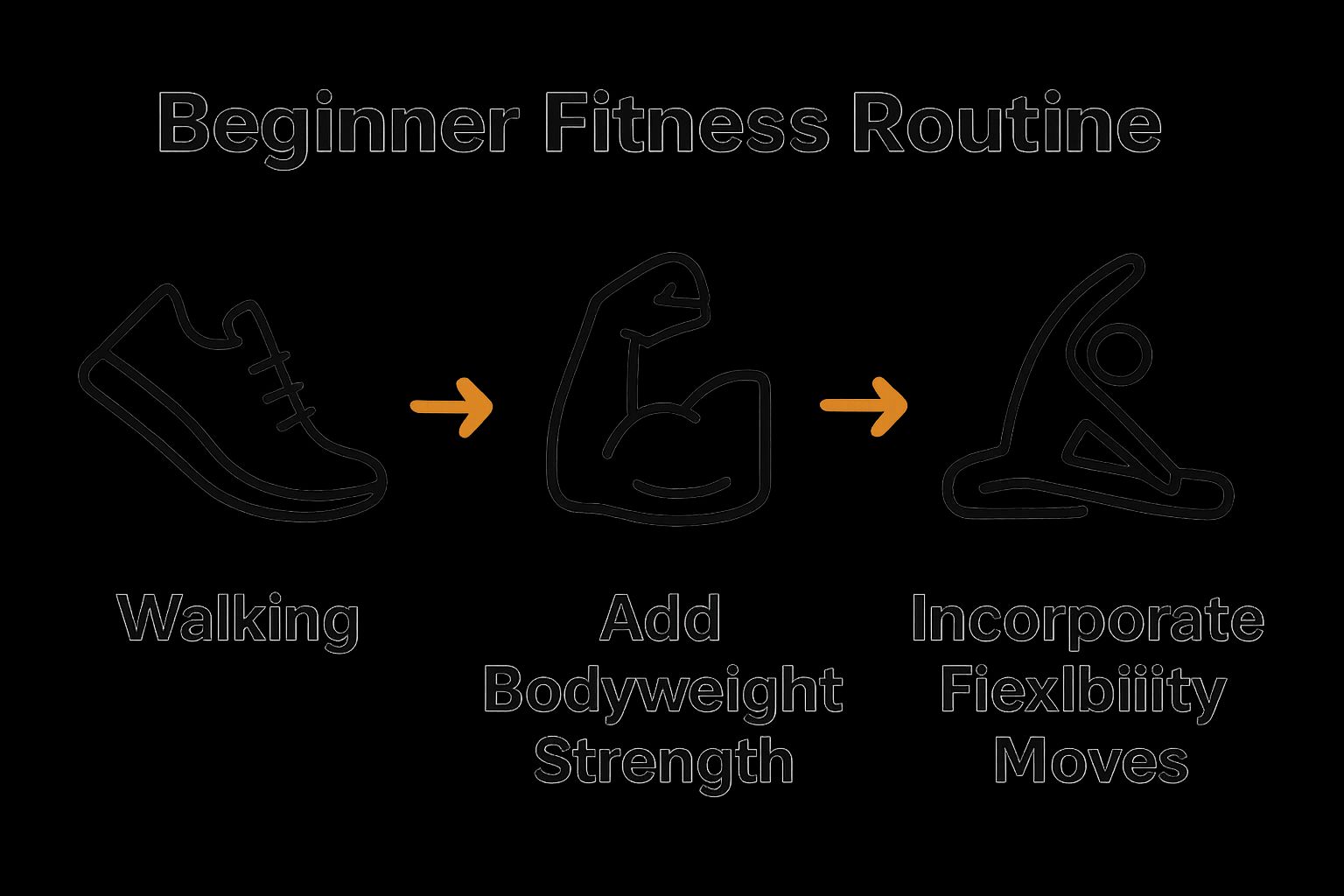 Begin with bodyweight exercises like modified push-ups, chair squats, and wall planks. These movements use your own body weight as resistance, making them safe and adaptable to different fitness levels. Consider using resistance bands, which provide gentle yet effective strength training with minimal joint strain.
Begin with bodyweight exercises like modified push-ups, chair squats, and wall planks. These movements use your own body weight as resistance, making them safe and adaptable to different fitness levels. Consider using resistance bands, which provide gentle yet effective strength training with minimal joint strain.
Balance and flexibility exercises deserve special attention for mature fitness enthusiasts. Practices like gentle yoga, tai chi, and stability ball workouts improve core strength, enhance coordination, and reduce fall risks. These activities also provide mental relaxation and stress reduction, offering benefits beyond physical fitness.
Here is an at-a-glance overview of recommended exercise types for beginners, highlighting the purpose and sample activities for each to help you build a balanced routine.
| Exercise Type | Purpose | Example Activities |
|---|---|---|
| Endurance | Improve cardiovascular health and stamina | Walking, swimming, stationary cycling |
| Strength | Build muscle mass and bone density | Bodyweight exercises, resistance bands |
| Balance | Enhance coordination and prevent falls | Gentle yoga, tai chi, stability ball work |
| Flexibility | Increase range of motion and reduce injury | Stretching, yoga, flexibility routines |
When selecting exercises, prioritize movements that feel comfortable and enjoyable. Listen to your body, progress slowly, and remember that consistency matters more than intensity. Start with short 10-15 minute sessions and gradually increase duration and complexity. Document your workout experiences in a fitness journal, noting which activities you enjoy and how your body responds.
Consult with a fitness professional or physiotherapist if you have specific health concerns or want personalized exercise recommendations. They can design a tailored program that aligns with your medical history, current fitness level, and personal goals.
Step 4: Create a Weekly Fitness Schedule
Developing a structured weekly fitness schedule transforms your step by step fitness for beginners approach from sporadic activity to a consistent wellness strategy. A well-designed schedule provides predictability, accountability, and a clear roadmap for progress. The key is creating a balanced plan that challenges you while allowing sufficient recovery time.
Start by mapping out your weekly commitments, identifying realistic time slots for exercise. Most beginners find success with a 3-4 day workout routine that alternates activity types and includes rest periods. Consistency matters more than duration, so prioritize establishing a sustainable rhythm over intense, unsustainable workouts.
Canadian Physical Activity Guidelines recommend adults accumulate at least 150 minutes of moderate to vigorous physical activity weekly. Design your schedule to distribute these minutes strategically across different activities and intensity levels.
A sample beginner schedule might include: cardiovascular exercise like walking or swimming on Monday and Wednesday, strength training using bodyweight or light resistance on Tuesday and Friday, and flexibility work such as gentle yoga or stretching on Thursday. Weekend days can be reserved for active recovery or light recreational activities that keep you moving without intense strain.
Utilize digital or physical tools to track your schedule. Smartphone fitness apps, wall calendars, or dedicated fitness planners can help you visualize your weekly plan and mark completed workouts. Color coding or check marks can provide visual motivation, transforming your schedule into an engaging progress tracker.
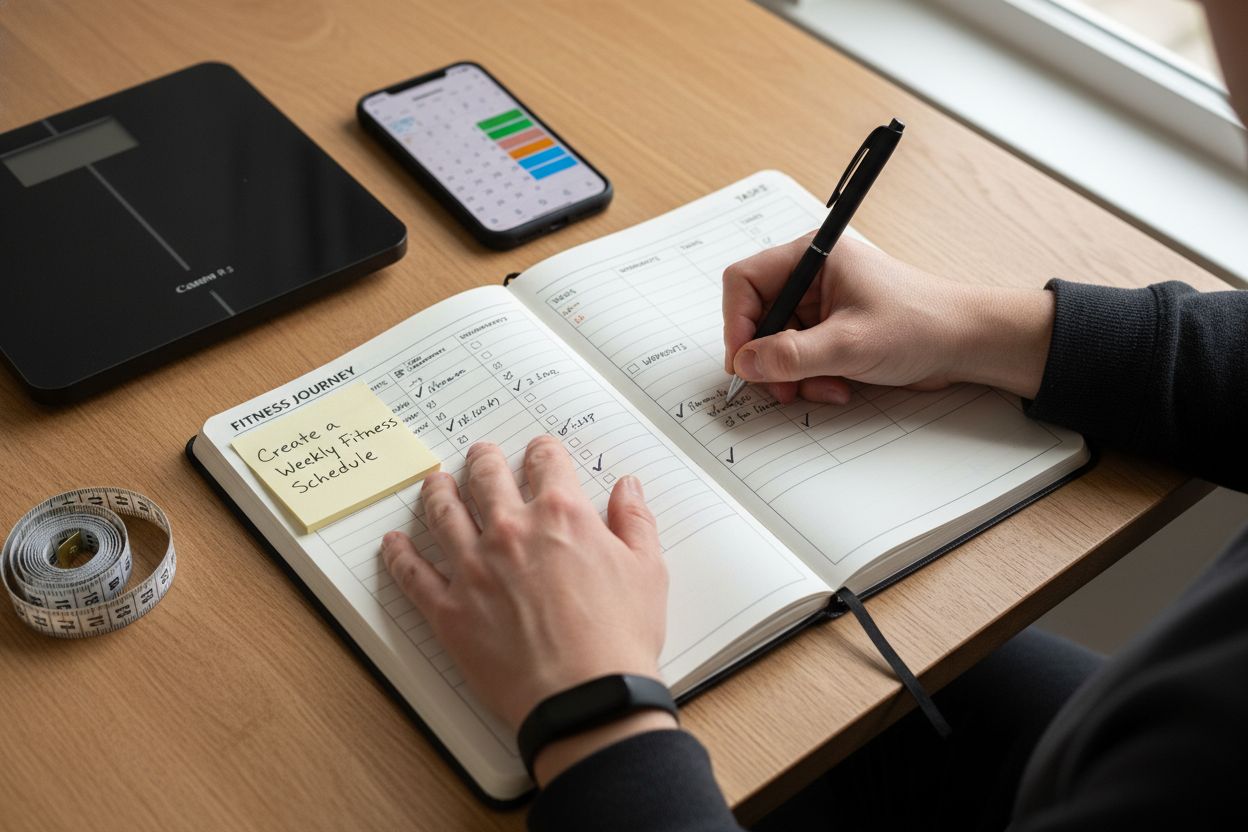
Be prepared to adjust your schedule as you learn more about your body and fitness preferences. Flexibility is crucial – if a particular time slot consistently feels challenging, shift your workouts to more convenient periods. The most effective fitness schedule is one you can realistically maintain.
Incorporate built-in accountability mechanisms like scheduling workouts with a friend, joining online fitness communities, or setting phone reminders. These strategies help overcome motivational barriers and transform your fitness schedule from a theoretical plan into an actionable routine. Remember, your schedule is a living document that should evolve with your growing strength and changing lifestyle demands.
Step 5: Track Your Progress Regularly
Progress tracking transforms your step by step fitness for beginners journey from a vague intention to a measurable transformation. Consistent monitoring provides motivation, accountability, and tangible evidence of your improving health. By documenting your fitness evolution, you create a personal roadmap that celebrates small victories and guides future improvements.
Begin by establishing baseline measurements before starting your fitness program. Take initial recordings of key health indicators such as body weight, body measurements, resting heart rate, and basic performance metrics like how many push-ups you can complete or how long you can walk continuously. These starting points become your reference for future comparison.
American Heart Association recommends using multiple tracking methods to gain comprehensive insights into your fitness journey. Digital fitness apps, wearable activity trackers, and traditional fitness journals each offer unique advantages for monitoring progress.
Develop a consistent tracking routine that fits seamlessly into your lifestyle. Set a specific day and time each week to record your measurements and workout achievements. Some individuals prefer Sunday evening reflections, while others might choose Monday morning check-ins. The key is selecting a time that feels natural and sustainable for you.
Beyond numerical metrics, track qualitative improvements in your physical and mental well-being. Note changes in energy levels, sleep quality, mood, and overall comfort during daily activities. These subjective observations often reveal fitness progress that numbers cannot capture. A journal entry describing how climbing stairs feels easier or how your clothes fit differently can be just as meaningful as weight measurements.
This table summarizes common methods to track your fitness progress and the advantages each provides, helping you choose the best approach for your needs.
| Tracking Method | What It Tracks | Advantages |
|---|---|---|
| Fitness Journal | Measurements, workouts, feelings | Personalized, simple, tracks both stats and mood |
| Smartphone App | Steps, workouts, goals, progress | Automated logging, visual progress, reminders |
| Wearable Activity Tracker | Steps, heart rate, activity time | Real-time feedback, accurate, easy to use |
| Weekly Check-ins | Body stats, performance milestones | Encourages routine, tracks changes over time |
Utilize technology strategically to simplify progress tracking. Smartphone applications can automatically log workout details, track step counts, and generate visual progress reports. Many apps allow you to set personalized goals and receive motivational notifications that keep you engaged with your fitness journey.
Remember that progress is not always linear. Some weeks you might see significant improvements, while others might feel plateaued. Embrace these fluctuations as a normal part of fitness development. Consistent effort matters more than perfect performance, and your tracking method should inspire continued commitment rather than discourage you during slower progress periods.
Step 6: Adjust and Enhance Your Routine as Needed
Your step by step fitness for beginners journey is not a static path but a dynamic, evolving process. Adaptability is the cornerstone of long-term fitness success, requiring consistent evaluation and strategic modifications to your workout routine. Recognizing when and how to adjust your exercise plan ensures continued progress and prevents potential plateaus or burnout.
Regular assessment of your fitness routine involves analyzing multiple dimensions of your physical performance and overall well-being. Review your progress tracking data, paying close attention to changes in energy levels, workout performance, and how your body responds to different exercises. Some signs indicating the need for routine adjustment include persistent fatigue, lack of progression, recurring minor injuries, or diminishing motivation.
American College of Sports Medicine recommends implementing progressive overload, a strategy of gradually increasing workout intensity, duration, or complexity. This approach prevents fitness stagnation and continually challenges your body to adapt and improve.
When modifying your routine, make incremental changes rather than drastic overhauls. If you’ve been walking 30 minutes daily, consider increasing duration by 5-10 minutes or introducing light interval training. For strength training, this might mean adding a few extra repetitions, increasing weight slightly, or introducing more complex variations of existing exercises.
Listen to your body’s signals and be prepared to modify your approach. Some weeks you might need more rest, while others allow for increased intensity. Flexibility is crucial in maintaining a sustainable fitness journey. Consider consulting a fitness professional or physiotherapist if you’re unsure about appropriate modifications, especially if you have pre-existing health conditions.
Develop a mindset of curiosity and experimentation with your fitness routine. Try different types of exercises, explore new workout classes, or incorporate alternative training methods like resistance bands, stability balls, or bodyweight exercises. This approach not only prevents boredom but also challenges your body in unique ways, promoting comprehensive fitness development.
Remember that adjustment is not a sign of failure but a testament to your commitment. Successful fitness journeys are characterized by continuous learning, adaptation, and a willingness to modify strategies that no longer serve your evolving health goals.
Transform Your Fitness Journey with Real Solutions for Lasting Health
You have just learned how step by step fitness empowers beginners to take charge of their health through careful assessment, clear goals, and a personalized routine. But starting a new wellness journey often raises worries like staying motivated, tracking real progress, or finding equipment that fits your needs and age. If you are seeking practical ways to make your plan easier and more effective, you deserve tools and support designed just for mature adults in Canada.
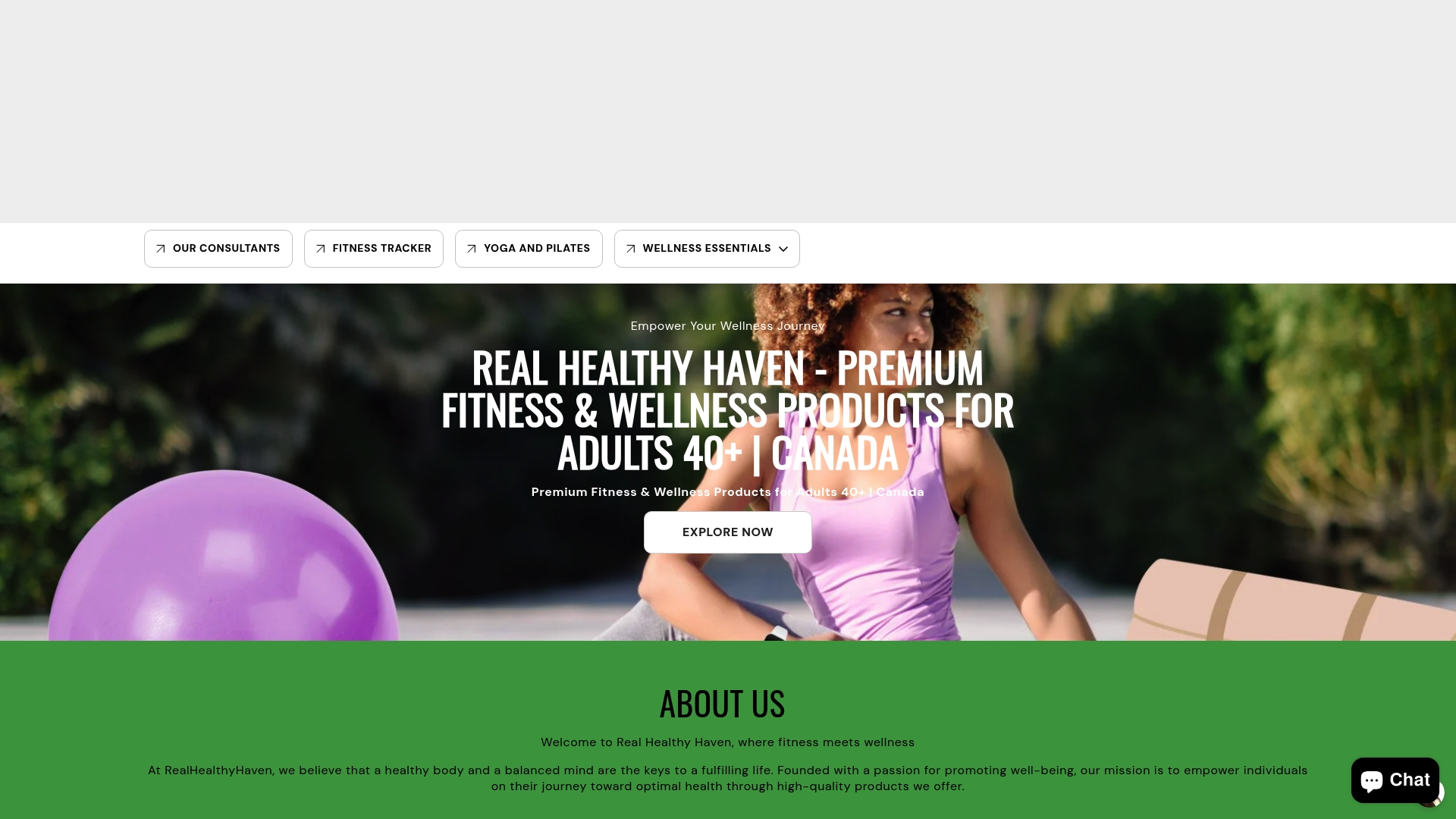
Ready for real results? Discover https://realhealthyhaven.com where you will find top-rated health monitors to track every achievement, comfortable activewear that makes every workout enjoyable, and professional consultations that keep you on the right path. Our curated fitness products are selected to help you safely improve strength, endurance, and flexibility. Visit Real Healthy Haven today to make each step in your fitness journey count. Start today for free shipping and last chance deals. Take a confident step towards lifelong health now.
Frequently Asked Questions
How do I assess my current health status before starting a fitness routine?
To assess your current health status, schedule a medical consultation for a thorough physical examination. Discuss your fitness goals with your doctor and request key health screenings such as blood pressure and cholesterol levels.
What are some clear fitness goals I can set for myself as a beginner?
Begin by identifying your motivations, such as improving cardiovascular health or building strength. Set specific, measurable goals like walking 10,000 steps daily or completing two strength training sessions each week.
What types of exercises are suitable for beginners aiming for lasting health?
Low-impact activities like walking, swimming, and using stationary bikes are great for beginners. Incorporate a mix of endurance, strength, balance, and flexibility exercises to create a well-rounded fitness routine.
How can I create a balanced weekly fitness schedule as a beginner?
Create a 3-4 day workout routine that includes different types of activities while allowing for rest days. For example, alternate cardiovascular exercises on Monday and Wednesday, with strength training on Tuesday and Friday.
What should I track to monitor my fitness progress effectively?
Track key metrics such as body weight, measurements, and workout performance to monitor your fitness progress. Implement a consistent routine to record these metrics weekly, helping you visualize improvements over time.
How can I know when to adjust my fitness routine?
Regularly assess your energy levels, workout performance, and whether you face any persistent fatigue or lack of motivation. If needed, gradually increase the intensity or duration of your workouts when you feel comfortable, such as adding an extra 5-10 minutes to your sessions.
